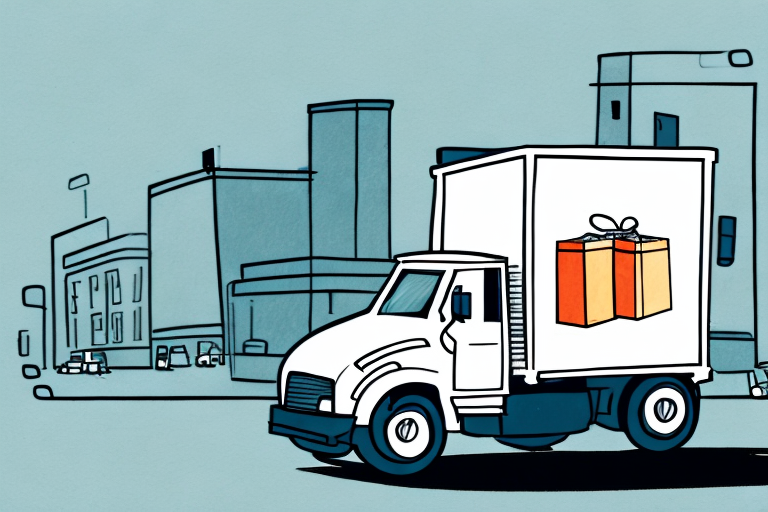Importance of Efficient Retail Delivery
In the highly competitive world of retail, efficient delivery is crucial. Customers today expect their orders to arrive quickly and reliably, and efficient delivery can enhance your business's reputation, leading to increased loyalty and repeat purchases. According to a 2023 Statista survey, 85% of customers prioritize delivery speed when choosing a retailer.
Streamlining Your Delivery Processes
Analyzing and Optimizing Current Systems
Begin by analyzing your existing delivery process to identify inefficiencies. Utilize data analytics to pinpoint bottlenecks and areas where delays frequently occur. Tools like advanced routing software can help create smarter routes that reduce travel time and fuel consumption.
Implementing Real-Time Tracking
Integrating a real-time tracking system allows you to monitor deliveries as they happen. This not only improves operational efficiency but also enhances customer trust by providing transparent tracking information.
Partnering with Third-Party Logistics Providers
Consider collaborating with reliable third-party logistics providers to manage your delivery operations. This can free up resources and allow you to focus on core business activities while ensuring efficient delivery.
Technological Innovations in Delivery
Advanced Routing Software
Modern routing software leverages machine learning algorithms to optimize delivery routes based on real-time data such as traffic patterns and weather conditions. This results in reduced delivery times and lower operational costs.
Drones and Autonomous Vehicles
The adoption of drones and autonomous vehicles is revolutionizing the retail delivery landscape. These technologies promise faster deliveries and lower labor costs, though widespread implementation is still in progress.
Automated Communication Systems
Enhance customer communication through automated systems that provide updates via email or SMS. This ensures customers are informed at every step of the delivery process, improving satisfaction and reducing support inquiries.
Managing Delivery Staff and Operations
Effective Communication
Invest in communication technologies such as GPS tracking and two-way radios to ensure seamless coordination among your delivery team. Clear communication helps prevent delays and enhances overall efficiency.
Training and Development
Provide ongoing training programs focusing on key skills like time management, customer service, and route optimization. Well-trained staff are essential for maintaining high delivery standards.
Performance Metrics
Establish clear performance metrics to monitor and evaluate your delivery team’s performance. Regularly reviewing these metrics helps identify areas for improvement and recognizes high performers.
Cost Reduction and Profit Maximization
Optimizing Delivery Routes
Efficient route planning minimizes fuel consumption and reduces vehicle wear-and-tear, directly lowering operational costs. Utilizing data-driven routing solutions can significantly impact your bottom line.
Consolidating Deliveries
Consolidate orders to reduce the number of trips required, thereby saving on fuel and labor costs. This approach not only cuts expenses but also contributes to environmental sustainability.
Adopting New Delivery Models
Explore innovative delivery models such as click and collect or locker pickup to offer flexible options to customers while reducing delivery complexities and costs.
Sustainability in Retail Delivery
Adopting Eco-Friendly Vehicles
Invest in electric or hybrid vehicles for your delivery fleet to reduce emissions and improve fuel efficiency. This move not only benefits the environment but also appeals to environmentally conscious consumers.
Green Delivery Policies
Implement policies that focus on reducing your carbon footprint, such as optimizing routes to minimize travel distance and consolidating deliveries to decrease the number of trips.
Partnering with Sustainable Logistics Providers
Collaborate with logistics partners who prioritize sustainability in their operations. This ensures your entire supply chain aligns with your environmental goals.
Measuring Success and Enhancing Customer Satisfaction
Key Performance Indicators (KPIs)
Track essential KPIs such as delivery times, on-time delivery rates, and customer satisfaction scores. Analyzing these metrics helps you gauge the effectiveness of your delivery operations and identify improvement areas.
Customer Feedback and Reviews
Encourage customers to provide feedback on their delivery experience. Positive reviews can boost your reputation, while constructive criticism offers insights for enhancing service quality.
Offering Flexible Delivery Options
Provide options like same-day or next-day delivery to cater to varying customer needs. Flexible delivery choices can significantly enhance customer satisfaction and loyalty.
Conclusion
Efficient retail delivery is a cornerstone of successful retail operations. By streamlining your delivery processes, leveraging technological innovations, effectively managing your delivery team, and focusing on sustainability, you can reduce costs, increase profits, and elevate customer satisfaction. Staying abreast of the latest trends and continuously optimizing your delivery strategy will ensure your business remains competitive in today’s dynamic market.
For more insights on optimizing your retail delivery, visit ShipScience.




















